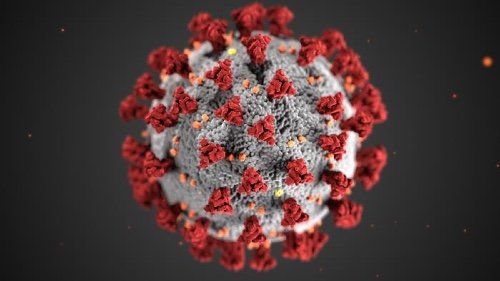4 Ways to Maximize Flex Time During COVID-19
Less imaging volume leaves radiologists with more down time.

For most radiologists, the COVID-19 outbreak has either led to reduced work hours or more work time from home. Chances are, you’re part of that group. And, if your imaging volume has dropped, you likely have more time on your hands than usual.
The slow-down in work can feel frustrating, but there are ways to maximize the down time. Experts from the University of Michigan and the Radiology Leadership Institute outlined four ways you can make the most of your reduced workload in an article published April 16 in Academic Radiology.
“Being ‘radiologically idle,’ at least in the short term, may very well stimulate a desire for meaningful contribution, especially given the increasing volumes of patients infected with COVID-19 and the massive changes in our country and our world,” wrote lead author David Fessell, M.D., professor of radiology.
Self-Care
Your initial thought during the outbreak might be to find a way to do something for others. But, just as you are advised to put your oxygen mask on first during a loss of cabin pressure on an airplane, you must take care of yourself in order to help anyone else.
Fessell’s team recommends setting up positive routines, including setting goals, exercising, maintaining a healthy diet, staying well-rested, and keeping in touch with loved ones. Track your progress to keep yourself motivated. And, focus on the positive things around you – in some cases, that could be restricting news updates to certain amount of time each day.
Participate in online conversations with mentors, colleagues, coaches, spiritual advisors, and mental health professionals, if needed. And, focus on things you can control to minimize emotional fatigue.
“Self-care, including our emotional and mental health, is essential,” Fessell wrote. “Self-care is not self-indulgent – it allows us to support those who rely on us.”
Supporting Others
Taking the time to help others – your family or community members – can also be fulfilling, the team suggested. Consider giving to a food bank or donating blood, as supplies are becoming perilously low, they suggested.
You can also stay connected virtually. Host online coffee chats, happy hours, or other social events through the social networking platform of your choice. Make time for frequent check-ins, and gather your thoughts with positive and encouraging updates before the calls. Doing so can reduce stress and anxiety, and it can foster a continued sense of connection and belonging with family and friends.
“These events can be an occasion to share coping strategies, jokes, and gratitude, as well as concerns and fears,” they wrote. “By providing a listening ear, a bit of hope, and a connection to meaning and purpose, we can deepen the family bonds that help sustain us all.”
Professional Work
With fewer images to read, you have more time to pursue professional interests that might have fallen by the wayside, such as those mandatory continuing medical education credits.
Make use of the time to learn more about a subject that interests you and that will impact your practice, including artificial intelligence or particular advances in your sub-specialty. Now might also be a good time to create online lectures for trainees or prepare presentations for future conferences. Get ahead now because you aren’t guaranteed you’ll have the opportunity for these things later.
“The future is uncertain, but it is not unreasonable to expect less conference or professional development time when the COVID-19 pandemic is over,” the team wrote. “There may be a post COVID-19 surge in radiology work. Doing all that one can do now is prudent and helpful from a psychological standpoint.”
Personal Development
But, don’t make all this downtime about work. Take some “you” time, the experts said.
Develop a new hobby – learn to paint, pick up an instrument, sketch, try your hand at a foreign language, or organize family momentos. Now could also be a good time to reassess your long-term goals. Are they same now as they were before the viral outbreak? Have your priorities changed?
Ultimately, Fessell’s team said, concentrate on using this time to make a difference in new ways you may have never considered before.
“While we may not currently be able to contribute in our normal ways as radiologists, there is still much to be done for our families, communities, practices, and for ourselves,” they wrote. “Focusing on what we can do, and making progress, will serve us well.”
The Reading Room Podcast: Emerging Trends in the Radiology Workforce
February 11th 2022Richard Duszak, MD, and Mina Makary, MD, discuss a number of issues, ranging from demographic trends and NPRPs to physician burnout and medical student recruitment, that figure to impact the radiology workforce now and in the near future.
Strategies to Reduce Disparities in Interventional Radiology Care
March 19th 2025In order to help address the geographic, racial, and socioeconomic barriers that limit patient access to interventional radiology (IR) care, these authors recommend a variety of measures ranging from increased patient and physician awareness of IR to mobile IR clinics and improved understanding of social determinants of health.
Study Explores Impact of Insurance on Treatment and Referrals for Patients with Uterine Fibroids
February 19th 2025Women with uterine fibroids and Medicaid coverage are significantly more likely to be treated with uterine artery embolization than those with commercial insurance, according to newly published research.